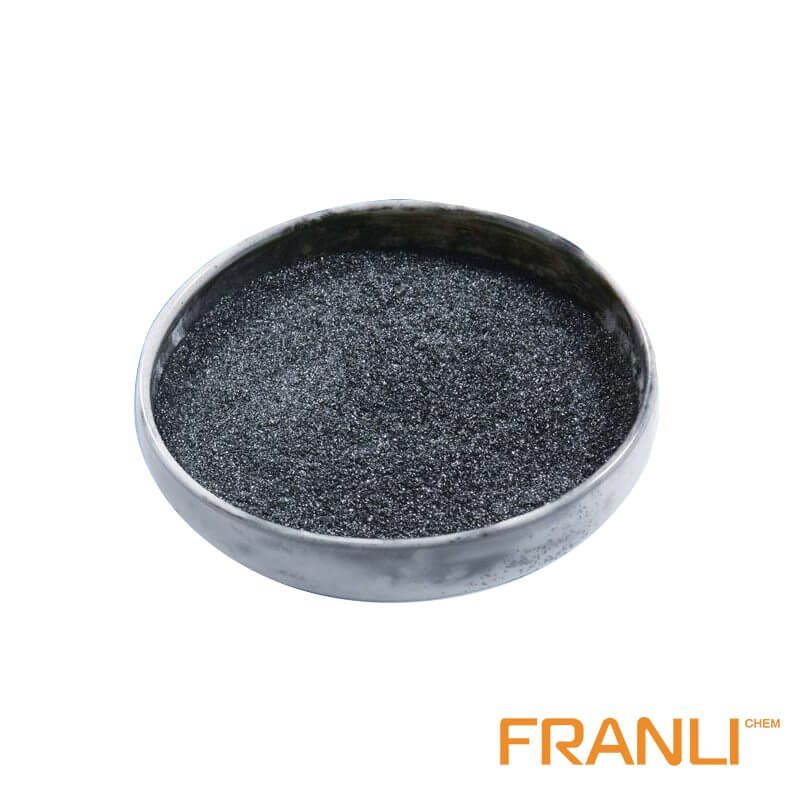

Carbon Graphite
Size
0.01mm
Carbon Content
99%min
Package
25kg small bags into ton bags or ton bags
Features
Good thermal and electrical conductivity, grey-black opaque solid
Application
For mechanical seals, battery manufacturing, anti-corrosion products, carbon graphite electrodes, etc.
Carbon graphite can be used to produce refractory materials, conductive materials, wear-resistant materials, lubricants, high-temperature sealing materials, corrosion-resistant materials, thermal insulation materials, adsorption materials, friction materials and radiation protection materials, etc. These materials are widely used in electromechanical brush and seal etc.
Request a quoteCarbon graphite is a non-metallic material composed of carbon atoms arranged in a hexagonal lattice structure, which is widely used as a raw material for the production of conductive graphite blocks. Due to its unique physical and chemical properties, carbon graphite is one of the most important raw materials in manufacturing. The extraction and refining process of carbon graphite requires strict procedures to ensure the high quality of the finished product. The Franli believes that it is important to understand the importance of carbon graphite and its potential applications.

Excellent properties of carbon graphite
The raw material for carbon graphite is mined from natural sources such as ore and rock. Extracting graphite from the source involves several processes, including milling, crushing, and flotation. These procedures are implemented to remove impurities and obtain high-quality graphite. After extracting the raw material, it is purified through several stages of high-temperature treatment to remove any residual impurities.
It has excellent electrical and thermal conductivity, making it an ideal material for the production of conductive graphite blocks. These modules are used in a variety of applications, including electrodes for electric arc furnaces, graphite molds for cast metals, and graphite anodes for lithium-ion batteries.
The raw material for carbon graphite is mined from natural sources such as ore and rock. Extracting graphite from the source involves several processes, including milling, crushing, and flotation. These procedures are implemented to remove impurities and obtain high-quality graphite. After extracting the raw material, it is purified through several stages of high-temperature treatment to remove any residual impurities.
Features of carbon graphite blocks
(1) Production involves a complex manufacturing process, including mixing toner with a binder, molding the mixture into the desired form, and heating it to a high temperature in a furnace. The resulting material is then processed into the desired shape and size. The manufacturing process of graphite blocks is complex and requires strict quality control to ensure optimal performance and durability.
(2) Unique molecular structure: This molecular structure consists of tightly packed layers of carbon atoms arranged in a hexagonal pattern. This structure gives carbon graphite high conductivity and low electrical resistance, as well as the ability to withstand extreme temperatures, pressures and corrosive environments. The quality of carbon graphite blocks depends on their density, porosity, and mechanical properties. High-quality graphite blocks have low porosity, high density and excellent mechanical strength. They also have a smooth surface finish that provides good electrical conductivity and reduces wear.

Potential applications for carbon graphite
(1) Production of conductive graphite blocks: for a range of high temperature and high pressure applications. These modules are used in everything from nuclear reactors and power plants to aerospace vehicles and other cutting-edge technologies. Carbon graphite’s high thermal conductivity and low coefficient of friction make it an excellent choice for applications where thermal or frictional applications are concerned and where dimensional stability is critical.
(2) In the aerospace industry, it is used to manufacture aircraft components because of its excellent strength and stiffness. The energy industry also uses carbon-graphite blocks in generators, wind turbines, and other systems that require high-performance conductive materials. The automotive industry also uses graphite blocks made of carbon graphite to produce electric and hybrid vehicles.
(3) Advanced composite materials: such as the manufacture of aerospace components and other high-performance materials. In addition, it is used in the production of electrodes and cathodes for batteries and fuel cells, as well as in the manufacture of semiconductors and other electronic components.
Carbon graphite’s unique electrical, mechanical and thermal properties make it a versatile material, and it is an essential key raw material for the production of conductive graphite blocks. It can also be used in a variety of applications in multiple industries. With the continuous advancement of technology, carbon graphite plays an increasingly important role in meeting the needs of industry and society. The Franli company can provide high-quality carbon graphite conductive materials at affordable prices. Contact us if necessary.



